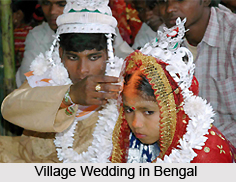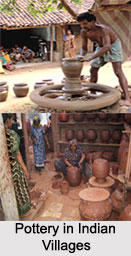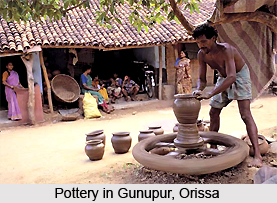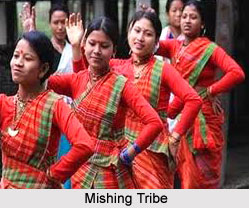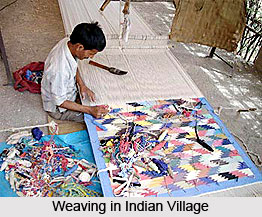 Weaving is an ancient art of making cloth and other fabrics and the Indians have been expert of weaving since the ancient period. Weaving is the process of making cloth, rugs, blankets and other products by crossing two sets of threads over and under each other. Weaving in Indian villages has been a hobby for several centuries now. Weaving has also become a major industry in the contemporary period. Weaving in Indian villages is done using threads spun from natural fibers like cotton, silk and wool and also using the synthetic fibers like nylon and Orlon.
Weaving is an ancient art of making cloth and other fabrics and the Indians have been expert of weaving since the ancient period. Weaving is the process of making cloth, rugs, blankets and other products by crossing two sets of threads over and under each other. Weaving in Indian villages has been a hobby for several centuries now. Weaving has also become a major industry in the contemporary period. Weaving in Indian villages is done using threads spun from natural fibers like cotton, silk and wool and also using the synthetic fibers like nylon and Orlon.
The Indian hand woven fabrics have been famous all over the world since times immemorial. The ancient Indian cotton-fabric Muslin was considered one of the most unique creations of Indian weavers. India was also one of the major exporters of textiles to most parts of the civilised world in the ancient period. However, in contemporary India, weaving is not limited to cloth and textile products. It plays an important part in manufacture of screens, metal fences and rubber tire cord.
Weaving in Indian villages is considered one of the largest cottage industries. Several people are engaged in weaving cotton, silk and other natural fibres and not a single village can be found in India, where the weavers do not live. Various types of weaving are done in the villages of India. Some of the most popular types of weaving in Indian villages include cotton fabrics, patola weaving, ikat fabrics, phulkari, carpet weaving, embroidery, sanganeri prints, chindi dhurries, batik sarees, himroo, hand block printing, etc.
Different region of India is famous for different types of weaving. The villages of Tamil Nadu are famous for a special kind of weaving named Madras Checks. The ikat fabrics are the pride of the villages of Andhra Pradesh and Orissa and in the villages of Uttar Pradesh, the Brocades and jacquards are famous. The villages of West Bengal are famous for weaving the fabrics like Daccai, Jamdani, Taant, etc. and the villagers in Punjab are expert in weaving Phulkari. The other famous weaving styles found in the villages of India include Chanderi pattern in Madhya Pradesh, Baluchar, Surat tanchoi, Benarasi, etc. On the other hand, people in the villages of Jammu and Kashmir are involved in weaving the world famous Pashmina and Shahtoosh shawls. The villages of India are famous all over the world for producing the famous fabrics like mulberry silk, tasser (tussore), eri and muga as well.
Apart from weaving, people in the Indian villages are also involved in other occupations like dying, designing, etc. Weaving in Indian villages is one of those rare assets for which India can feel proud of.
